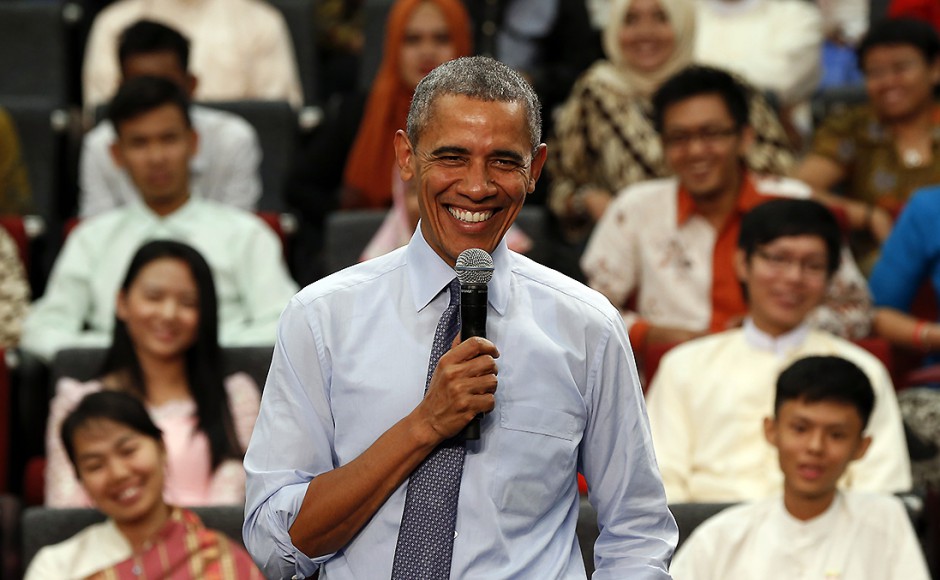WHILE Barack Obama’s visit to Laos this week is the first ever by any U.S. president and hence ‘historical’, it is not merely history that Obama is after nor is the visit aimed at washing from the public memory the horrors of massive bombing Laos was subjected to during the Vietnam War.
On the contrary, the visit is a tactical move and has come at a time when, on the one hand, the issue of South-China sea has gained special importance after a controversial ruling by the international court, and on the other, when diplomatic efforts directed at coaxing this region’s countries into the US-led Trans Pacific Partnership (TPP) are also in full swing.
The official statement issued by the White House thus reads the cardinal objective of the visit:
“This visit also will support the President’s efforts to expand opportunities for American businesses and workers to sell their products in some of the world’s fastest-growing markets. Central to this effort is the Trans-Pacific Partnership [TPP], the high-standards trade agreement that will unlock key markets to American exports and cement America’s economic leadership in the Asia-Pacific.”
The TPP, which was borne out of geopolitical considerations in Hillary Clinton’s State Department as the economic component of the Obama administration’s “strategic pivot” to Asia, continues to be the ‘best’ geopolitical toolbox that the U.S. has at its disposal to re-establish its soft and hard diplomatic primacy in order to compel China and others to play by the rules designed to govern international commerce in the 21st century.
The seemingly unprecedented significance Laos has today for the U.S. stems, as such, from the fact that the country is, due to its geographical location, a gateway for China’s “Silk Road” to enter Southeast Asia. Bordering Myanmar, China, Vietnam, Cambodia, and Thailand, it is a crossroads between much of Southeast Asia as well as the gateway into East Asia.
In developing Laos’ potential as a gateway between Southeast Asia and East Asia, China has undertaken or begun planning several massive infrastructure projects across its territory including highways and railways. China has invested around US$1 billion annually in Laos in 2014 and 2015, a step up from the US$4.5 billion invested historically before 2014, according to figures from China’s Ministry of Commerce.
Thailand has also played a role in developing Laos’ infrastructure. It has invested in a China-Laos-Thailand highway connecting the three nations, as well as constructed Laos’ first rail station across the border from Nong Khai, Thailand.
Obama, therefore, is least disturbed by the prospects of facing history in Laos.
His primary motivation is to try to wean the new Laos government away from China to, as the official statement states, pave the way for an American presence in the country.
Although it is an uphill task, given that China has strong economic presence in the land-locked country, the new government, Western diplomats seem to believe, has shown some tilt towards Vietnam which, in turn, is enjoying a ‘deep engagement’ with the U.S due to its dispute with China over the control of South China sea and its participation in the TPP.
Obama is, according to this particular understanding that does not seem to have strong basis, on a mission to exploit the “tilt” to turn in to its advantage in its last bid as the U.S. president to strengthen the U.S. “rebalance.”
However, the big question is: will the people of Laos, who continue to remain victims of bombs dropped by the U.S. during the Vietnam War, be able to reconcile American investment with maimed bodies?
Even almost 50 years after the War, during which one-third of the bombs had failed to explode on impact, Laos continues to have 500 victims a year, mainly children and farmers forced to work on their contaminated fields to sustain their families.
As of 2015, despite tens of millions of dollars spent, only 1 percent of Laos’ territory had been cleared.
It is, as such, not simply the memory of the past but the threat that past continues to pose to people that Obama has to deal with during his ‘historical’ visit.
Hence the question: Will Obama’s participation in the YSEALI summit yield the desired result of attracting the youth towards integrating themselves into the networks and institutions built by and serving Western interests rather than those of Laos and Asia?
Source: Asian Correspondent



